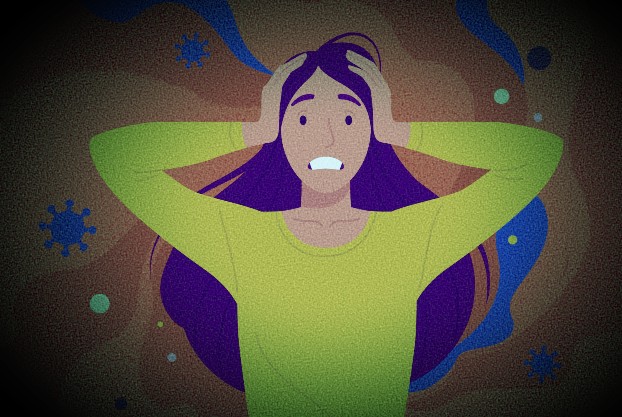Panic attacks can be overwhelming and frightening, often striking without warning. They are characterized by sudden, intense episodes of fear and physical symptoms such as a racing heart, shortness of breath, dizziness, and an overwhelming sense of doom. Understanding how to manage them can significantly improve your quality of life.
Panic disorder, a type of anxiety disorder, impacts millions globally, characterized by recurrent, unexpected panic attacks and ongoing fears of more episodes. Approximately 2-3% of U.S. adults experience panic each year, with women being twice as likely as men to be affected, according to the National Institute of Mental Health (NIMH). The exact cause remains unclear, but it likely involves a mix of genetic, biological, environmental, and psychological factors.
Research indicates that panic disorder is linked to abnormalities in brain areas such as the amygdala, crucial for the fear response, and the hippocampus, important for memory formation. Imbalances in neurotransmitters like serotonin, norepinephrine, and gamma-aminobutyric acid (GABA) also play a role. Additionally, factors like stressful life events, a history of childhood trauma, and chronic medical conditions can increase the risk of developing this.
Effective management often requires a comprehensive approach, including education, self-help strategies, and professional treatment. Here are five effective ways to deal with panic attacks, incorporating principles from therapy and strategies for managing panic.
1. Practise Deep Breathing Techniques
One of the most immediate and effective ways to manage a panic attack is through controlled breathing. Deep breathing can help calm the body's stress response and bring a sense of control back to the situation. Here’s how to do it:
- Find a Quiet Place - If possible, move to a calm and quiet environment.
- Breathe in Slowly - Inhale deeply through your nose for a count of four.
- Hold Your Breath - Hold your breath for a count of four.
- Exhale Slowly - Exhale slowly through your mouth for a count of four.
- Repeat - Continue this cycle until you feel your anxiety begin to decrease.
Deep breathing exercises are a cornerstone of many therapy techniques, helping to reduce the intensity and duration of an attack.
2. Use Mindfulness and Grounding Techniques
Mindfulness and grounding techniques are highly effective in managing panic attacks. These methods help shift your focus away from fear and anxiety, anchoring you in the present moment.
- 5-4-3-2-1 Technique: Identify five things you can see, four things you can touch, three things you can hear, two things you can smell, and one thing you can taste. This technique helps divert your mind from panic-inducing thoughts.
- Progressive Muscle Relaxation: Tense and then slowly release different muscle groups in your body, starting from your toes and working up to your head. This can reduce physical tension and anxiety.
3. Challenge and Reframe Negative Thoughts
Panic attacks are often fueled by irrational fears and catastrophic thinking. Cognitive strategies used in panic attack therapy can help you challenge and reframe these negative thoughts.
- Identify the Fear: Acknowledge the fear driving your panic. Ask yourself what exactly you are afraid of.
- Examine the Evidence: Look for evidence that contradicts your fear. Often, panic-inducing thoughts are based on worst-case scenarios rather than facts.
- Reframe the Thought: Replace the irrational thought with a more balanced perspective. For example, instead of thinking, "I’m going to faint," reframe it to, "This feeling is uncomfortable, but it will pass."
4. Engage in Physical Activity
Physical activity can be a powerful tool to combat panic attacks. Exercise helps release endorphins, which are natural mood lifters, and can also reduce stress hormones
- Go for a Walk: A brisk walk can help clear your mind and reduce anxiety.
- Practice Yoga: Yoga combines physical postures with deep breathing and mindfulness, making it particularly effective for managing panic attacks.
- Exercise Regularly: Incorporating regular exercise into your routine can help manage overall anxiety levels and reduce the frequency of panic attacks.
5. Seek Professional Help
If panic attacks are frequent and debilitating, seeking professional help is crucial. Trauma-informed care is an effective approach for those whose panic is rooted in past traumatic experiences.
- Trauma-Informed Care and Panic Attack Therapy: This approach recognizes the impact of trauma on mental health and focuses on creating a safe and supportive environment for healing. Therapists trained in panic attack therapy use techniques that prioritize your comfort and control, helping you process traumatic experiences that may be triggering panic attacks.
- Medications: In some cases, medications such as selective serotonin reuptake inhibitors (SSRIs) or benzodiazepines may be prescribed to help manage symptoms.
- Support Groups: Joining a support group for people with panic attack disorder can provide valuable emotional support and practical advice.
Dealing with panic attacks can be challenging, but with the right strategies and support, it is possible to manage and reduce their impact. Incorporating techniques such as deep breathing, mindfulness, cognitive reframing, physical activity, and professional therapy can make a significant difference. Remember, it’s essential to be patient with yourself and seek help if needed. Panic attack disorder is manageable, and with the right tools, you can regain control over your life.

